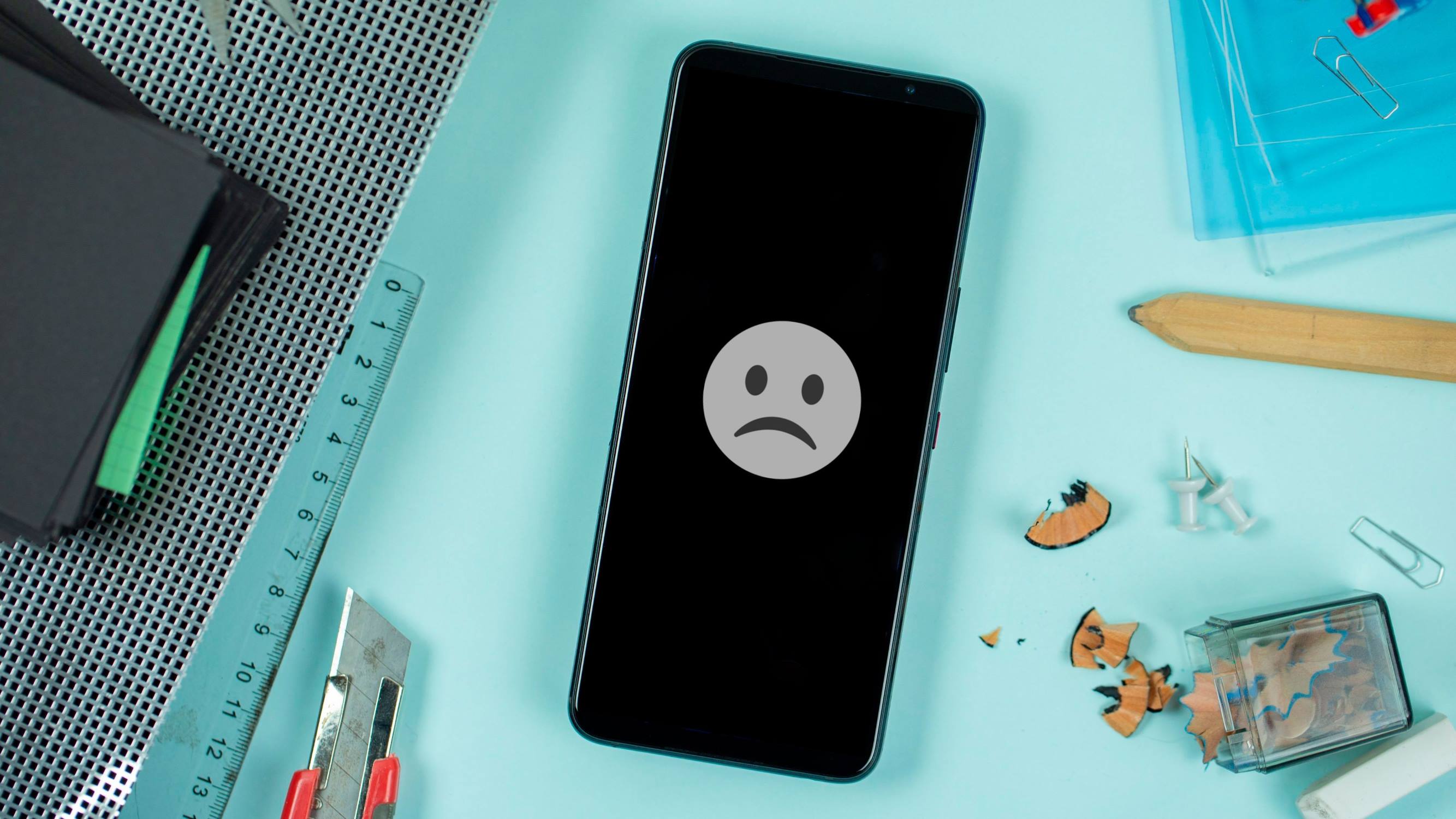Introduction
The Samsung S20 is a remarkable device that seamlessly integrates into our daily lives, providing a myriad of functionalities and features. However, as with any electronic device, there may be instances where the phone encounters issues such as freezing, crashing apps, or other performance-related concerns. In such situations, accessing Safe Mode can be a valuable troubleshooting tool to diagnose and resolve these issues.
Safe Mode serves as a diagnostic environment that allows the Samsung S20 to operate with basic settings and without third-party applications. By starting the device in Safe Mode, users can isolate potential causes of malfunctions, such as problematic apps or software conflicts. This invaluable feature enables users to troubleshoot and rectify issues that may be impacting the device's performance.
In the following sections, we will delve into the significance of Safe Mode and explore the step-by-step process of initiating Safe Mode on the Samsung S20. Additionally, we will discuss the troubleshooting capabilities offered by Safe Mode, empowering users to effectively address and resolve common issues that may arise during the device's operation. Understanding the functionality and benefits of Safe Mode equips Samsung S20 users with the knowledge to navigate and overcome potential challenges, ensuring a seamless and optimized user experience.
What is Safe Mode?
Safe Mode is a diagnostic tool integrated into the Samsung S20 and other Android devices, designed to facilitate troubleshooting and problem resolution. When the device is started in Safe Mode, it operates with minimal pre-installed software and without third-party applications. This stripped-down environment allows users to identify and address issues that may be caused by third-party apps or software conflicts.
In Safe Mode, only essential system functionalities and default applications are enabled, ensuring that the device operates with basic settings. By temporarily disabling third-party apps, users can determine whether a specific app is causing performance issues, such as freezing, crashing, or excessive battery consumption. This isolation process is instrumental in diagnosing and resolving software-related problems that may impact the Samsung S20's performance.
Safe Mode also serves as a safeguard against potential malware or malicious applications. By restricting the device to essential functions, Safe Mode prevents suspicious or unauthorized apps from running, thereby enhancing the security of the device. This proactive approach to security empowers users to identify and eliminate potentially harmful software, safeguarding the integrity and privacy of their Samsung S20.
Furthermore, Safe Mode provides a stable platform for troubleshooting hardware-related issues. By operating the device with minimal software and functionalities, users can assess whether performance issues persist in a controlled environment. This process aids in distinguishing between software-related and hardware-related problems, enabling users to make informed decisions regarding potential repairs or technical support.
In essence, Safe Mode is a fundamental feature that empowers Samsung S20 users to diagnose and address a wide range of software and performance-related issues. By creating a controlled environment with limited software dependencies, Safe Mode facilitates efficient troubleshooting, enabling users to identify and resolve issues that may impact the device's functionality and user experience.
Why Start Samsung S20 in Safe Mode?
Initiating Safe Mode on the Samsung S20 can be a pivotal step in addressing various performance-related concerns that users may encounter during the device's operation. By entering Safe Mode, users can effectively isolate and troubleshoot issues that may stem from third-party applications, software conflicts, or potential malware. This deliberate approach to problem-solving offers several compelling reasons to start the Samsung S20 in Safe Mode:
Troubleshooting Third-Party Apps:
Safe Mode provides a controlled environment where only essential system functionalities and default applications are enabled, effectively disabling third-party apps. This isolation process allows users to determine whether a specific third-party app is causing performance issues, such as freezing, crashing, or excessive battery consumption. By identifying and addressing problematic apps, users can restore the device's optimal performance and user experience.
Diagnosing Software Conflicts:
Software conflicts can arise when incompatible or malfunctioning apps disrupt the device's normal operation. Starting the Samsung S20 in Safe Mode enables users to assess whether performance issues persist in a stripped-down environment, devoid of third-party apps. This process aids in identifying and resolving software conflicts that may impede the device's functionality, ensuring a seamless and efficient user experience.
Enhancing Security:
Safe Mode serves as a proactive security measure by restricting the device to essential functions and default applications. This safeguard prevents suspicious or unauthorized apps from running, effectively mitigating the risk of malware or malicious software compromising the device's integrity. By leveraging Safe Mode to identify and eliminate potentially harmful software, users can bolster the security of their Samsung S20, safeguarding their privacy and data.
Assessing Hardware-Related Issues:
In addition to software troubleshooting, Safe Mode provides a stable platform for evaluating potential hardware-related issues. By operating the device with minimal software dependencies, users can discern whether performance issues persist in a controlled environment. This distinction between software-related and hardware-related problems empowers users to make informed decisions regarding potential repairs or technical support, ensuring the device's long-term functionality.
In essence, starting the Samsung S20 in Safe Mode equips users with a powerful diagnostic tool to address a diverse array of performance-related concerns. By isolating potential causes of malfunctions and security risks, Safe Mode empowers users to optimize the device's performance, security, and overall user experience.
How to Start Samsung S20 in Safe Mode
Initiating Safe Mode on the Samsung S20 is a straightforward process that empowers users to troubleshoot and resolve performance-related issues. By following the step-by-step procedure outlined below, users can seamlessly access Safe Mode and leverage its diagnostic capabilities to address potential software and security concerns.
-
Power Off the Device: To begin, ensure that the Samsung S20 is powered off. Press and hold the power button located on the right side of the device until the power off menu appears on the screen.
-
Access the Power Off Menu: Once the power off menu is displayed, press and hold the "Power Off" option on the screen. This action prompts a confirmation message to restart the device in Safe Mode.
-
Confirm Safe Mode Restart: Upon receiving the confirmation message to restart in Safe Mode, tap "Safe Mode" and then select "Restart." The device will commence the reboot process and initiate Safe Mode upon completion.
-
Enter Safe Mode: After the device restarts, "Safe Mode" will be prominently displayed at the bottom left corner of the screen, indicating that the Samsung S20 is now operating in Safe Mode.
-
Troubleshoot and Diagnose: With the Samsung S20 successfully in Safe Mode, users can proceed to troubleshoot and diagnose potential issues. Test the device's performance, assess app functionality, and observe any improvements or differences in operation compared to normal mode.
-
Exit Safe Mode: Once troubleshooting is complete, users can exit Safe Mode by restarting the device in the standard operating mode. Simply power off the device, then power it back on as usual to resume normal functionality.
By following these simple steps, Samsung S20 users can effectively initiate Safe Mode, enabling them to isolate potential causes of performance issues and security concerns. This intuitive process empowers users to leverage Safe Mode's diagnostic capabilities, facilitating efficient troubleshooting and problem resolution.
Starting the Samsung S20 in Safe Mode is a valuable skill that equips users with the ability to address a diverse range of software and performance-related concerns. By seamlessly accessing Safe Mode and leveraging its diagnostic capabilities, users can optimize the device's performance, security, and overall user experience.
Troubleshooting in Safe Mode
Safe Mode serves as a powerful diagnostic tool that empowers Samsung S20 users to address a diverse array of performance-related concerns. Once the device is successfully operating in Safe Mode, users can leverage this controlled environment to troubleshoot and diagnose potential issues effectively.
Isolating Problematic Apps:
One of the primary advantages of Safe Mode is the ability to isolate problematic third-party apps. By disabling non-essential applications, users can assess whether specific apps are causing performance issues such as freezing, crashing, or excessive battery consumption. This deliberate isolation process enables users to identify and address problematic apps, restoring the device's optimal performance and user experience.
Resolving Software Conflicts:
Software conflicts can disrupt the normal operation of the Samsung S20, leading to performance issues and instability. Safe Mode provides a stripped-down environment devoid of third-party apps, allowing users to diagnose and resolve software conflicts. By observing the device's behavior in Safe Mode, users can identify and address potential conflicts, ensuring a seamless and efficient user experience.
Assessing Performance Improvements:
Operating the Samsung S20 in Safe Mode provides a valuable opportunity to assess performance improvements. Users can test the device's functionality, app responsiveness, and overall stability in this controlled environment. By comparing the device's performance in Safe Mode to its normal operation, users can gain insights into potential causes of performance issues and evaluate the effectiveness of troubleshooting efforts.
Security Evaluation:
Safe Mode also serves as a proactive security measure, safeguarding the device against potential malware or malicious applications. By restricting the device to essential functions and default applications, Safe Mode mitigates the risk of security breaches. Users can leverage Safe Mode to assess the device's security and privacy, ensuring that it remains protected from potential threats.
Hardware-Related Troubleshooting:
In addition to software-related issues, Safe Mode provides a stable platform for evaluating potential hardware-related concerns. By operating the device with minimal software dependencies, users can assess whether performance issues persist in a controlled environment. This distinction between software-related and hardware-related problems empowers users to make informed decisions regarding potential repairs or technical support, ensuring the device's long-term functionality.
In essence, troubleshooting in Safe Mode equips Samsung S20 users with a comprehensive toolkit to address a wide range of performance-related concerns. By isolating problematic apps, resolving software conflicts, assessing performance improvements, evaluating security, and troubleshooting hardware-related issues, users can optimize the device's functionality and user experience effectively. Safe Mode's diagnostic capabilities enable users to navigate and overcome potential challenges, ensuring a seamless and optimized user experience.
Exiting Safe Mode
Exiting Safe Mode on the Samsung S20 is a simple and straightforward process that allows users to seamlessly transition back to the device's standard operating mode. Once users have completed the necessary troubleshooting and diagnostic activities in Safe Mode, they can proceed to exit this controlled environment and resume normal functionality.
To exit Safe Mode, users can follow the step-by-step procedure outlined below:
-
Power Off the Device: Begin by powering off the Samsung S20. Press and hold the power button located on the right side of the device until the power off menu appears on the screen.
-
Access the Power Off Menu: Once the power off menu is displayed, tap the "Restart" option. This action prompts the device to initiate a normal restart, exiting Safe Mode in the process.
-
Exit Safe Mode: After the device completes the restart process, it will resume normal operation, indicating that Safe Mode has been successfully exited.
By following these simple steps, users can effectively exit Safe Mode and transition back to the Samsung S20's standard operating mode. This intuitive process allows users to seamlessly resume regular device functionality, incorporating any troubleshooting insights gained from the Safe Mode experience.
Exiting Safe Mode signifies the completion of the diagnostic and troubleshooting activities, enabling users to apply any identified solutions or optimizations to the device's standard operation. This seamless transition back to normal functionality ensures that users can benefit from the insights gained in Safe Mode, optimizing the Samsung S20's performance, security, and overall user experience.
In essence, the process of exiting Safe Mode empowers users to leverage the diagnostic capabilities of this controlled environment, address potential issues, and seamlessly transition back to the device's standard operating mode. By following the outlined steps, Samsung S20 users can effectively navigate and optimize the device's functionality, ensuring a seamless and efficient user experience.

























